Table of Contents
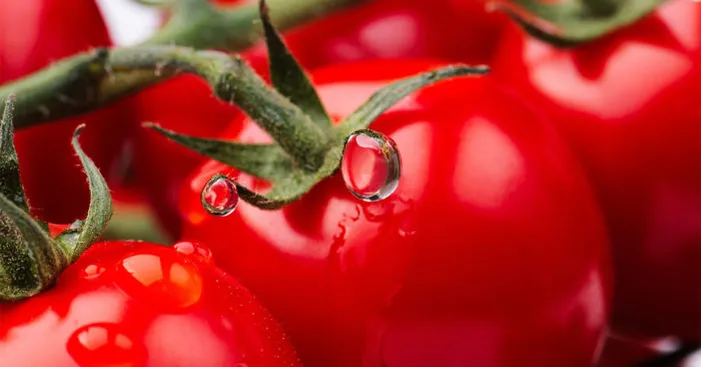
How many carbs in tomatoes is a question that we all need to ask, as it seems that we don’t know much about it.
Even though, we consume large quantities of tomatoes in our different recipes we spend less time researching tomato nutrition.
In this article, we gathered almost everything you need to know about tomatoes including the answer to how many carbs in tomatoes, tomato health benefits and side effects, how to buy & use & store tomatoes and much more!
When tomatoes were first discovered?
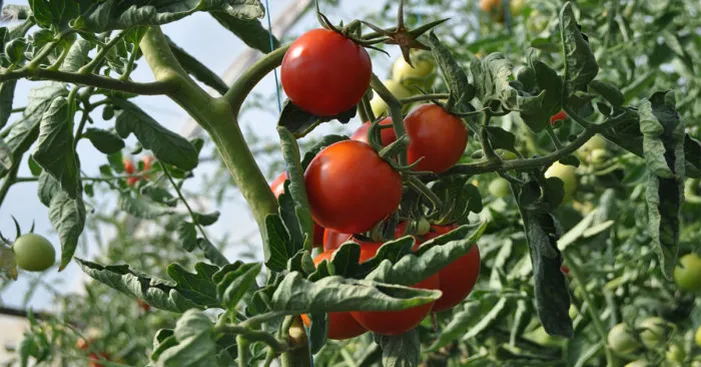
The word “tomato” derived from the word “tomalt”, was used in the Quechua language of the Incas!
Tomatoes were first discovered by Christopher Columbus, back in the 15th century, while he was discovering South America.
The ones he discovered were so similar to cherry tomatoes nowadays, in terms of shape.
When tomatoes reached Spain and Italy in the 16th century, they named it “Pomodoro” AKA “the golden apple”.
Something silly is that Europeans didn’t give these fruits much interest at first, they thought it was a toxic plant so they only used tomato for decoration purposes.
No less than 3 centuries after, is when Europeans finally took the risk and first tasted tomatoes.
How many carbs in tomatoes?
Tomatoes are full of nutrients including manganese, magnesium, phosphorus, copper, potassium…
Not only minerals, but they are also a great source of fibers, protein, and many essential vitamins especially vitamin A, C, and B9.
These data count for the daily serving of 1 cup of chopped raw tomatoes (148g) :
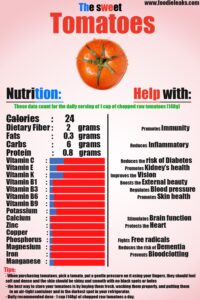
- Calorie: 24
- Fibers: 2g
- Fats: 0.3g
- Carbs: 6g
- Protein: 0.8g
- C vitamin: 26%
- E Vitamin: 13%
- A vitamin: 25%
- B1 vitamin: 6%
- B3 vitamin: 5%
- B6 vitamin: 8%
- B9 vitamin: 8%
- Potassium: 12%
- Calcium: 2%
- Zinc: 3%
- Copper: 5%
- Phosphorus: 5%
- Magnesium: 3%
- Iron: 3%
- Manganese: 8%
Therefore, consuming tomatoes on a regular basis would result in a healthier body as it offers so many health benefits such as:
Improves the vision:
Consuming this amazing fruit would result in better vision and prevent you from getting eye diseases.
It is because there are many carbs in tomatoes that are full of essential nutrients, especially vitamin A, which have anti-inflammatory properties.
As a result, you will have better protection against night blindness and optic atrophy. (1)
Also, tomatoes are a good source of protein, beta-carotene, and zeaxanthin, two powerful antioxidants.
Studies confirm the effectiveness of these two antioxidants to protect the eyes from age-related heritability and light damage. (2)
Boosts the external beauty:
Tomatoes’ natural compounds don’t just benefit our internal body but also have a great impact on our external appearance.
For instance, eating tomatoes daily would result in healthier skin and shiny hair. (3)
Thanks to vitamins A, B, C, E, and K which combined protect the skin from sunburn, help regenerate dead cells and promote hair growth.
On the other hand, antioxidants in tomatoes help fight free radicals that can harm skin cells and lead to early aging signs.
Reduces inflammation:
Tomatoes are among the nutrients rich food which helps prevent infections and fight carcinogens, free radicals, and poisons.
Again, the antioxidants properties of tomatoes notably reduce oxidative stress, therefore reduces the risk of cells becoming carcinogenic.
A study on a group of women shows that a large amount of beta-carotene in tomatoes can reduce the risk of breast cancer. (4)
Reduces the risk of diabetes:
Tomatoes are a very low glycemic index (GI) with less than 2g per 3.5oz (100g) and that is less than 1% of our daily need for carbs.
With that low carbs content, tomatoes are digested slowly unlike carbohydrate-rich food which gets digested fast and releases sugar rapidly.
As a result, you will help the body regulate sugar levels as it needs the energy to digest low-carb food slowly.
In other words, the body will use its stored sugars and burn them while digesting tomatoes which from their part release their sugar more slowly and that is ideal to maintain a stable blood sugar level.
No wonder why almost every doctor recommends diabetic people to eat tomatoes and low glycemic index food regularly.
Many studies prove that type II diabetes patients who consume fiber-rich food tend to have a lower blood sugar level. (5)
Tomatoes provide 3g of fibers per cup which helps meet the American Diabetes Association recommended intake of 38g of fibers for men and 25g for women. (6)
Improves kidney health:
Tomatoes contain a good amount of water with more than 10% of our daily needs in just one cup of chopped tomatoes.
That amount of water in food is generally an addition to the amount of water we drink.
Consequently, eating fruits that contain water will minimize the risk of dehydration and will stimulate urine production.
Let’s lay it as simple as this: producing more urine facilitates the function of kidneys to get rid of toxins.
In addition, tomato water also helps the body prevent the formation of kidney stones as some studies suggest. (7)
Stimulates brain function:
Oxidative stress is the result of a defect between antioxidants and free radicals in the body.
This lead to the destruction of healthy cells, proteins, DNA and result in leaving the brain vulnerable to deterioration.
Therefore, daily intake of tomatoes increases the antioxidants in the body and neutralizes free radicals.
By doing that, the body will have a better chance of reducing the damage of free radicals, thereby ensuring a healthy function of the brain. (8)
Protects the heart:
Studies show that lycopene (a type of carotenoid pigments) in tomatoes reduces the level of bad cholesterol in the blood. (9)
Consequently, the body is less vulnerable to blood clotting and strokes and more generally have less risk of cardiovascular diseases.
In addition, one cup of tomatoes provides more than 20% of our daily need in vitamin B9 which helps our body break down Homocysteine. (10)
This is an amino acid our body converts into beneficial micronutrients and if it’s not converted it may risk getting strokes and even dementia.
Are tomatoes fruits or vegetables?
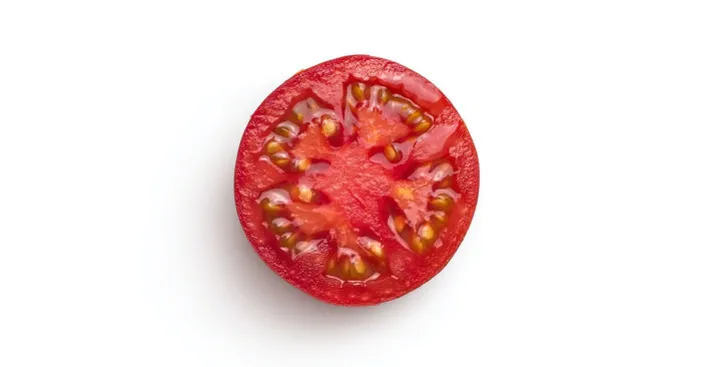
According to botany, the science of studying plants, tomatoes are among the fruits. (11)
Based on this science, fruits are the ovaries of flowering plants in which they grow seeds.
Using that scientific definition, tomatoes are among the fruits because they grow from flowering plants and contain seeds.
However, most of our classification of food comes from the way we use them in the kitchen.
According to kitchen usage, we consider vegetables all the solid plant-based food that we use in stews, casseroles.
On the other hand, we consider fruits all the soft plant-based food that taste sweet and are often consumed raw or in desserts.
Based on those kitchen standards, we often use tomatoes to prepare savory dishes, which is the reason why we consider them vegetables even though they are fruits by definition.
Precautions you need to know before you eat tomatoes:

As always, we have this section where we mention some possible health complications that some people may suffer from when eating tomatoes.
Even though this is generally not the case, but we should always eat our food in moderate amounts.
For instance, pregnant women are advised to consume moderate amounts of tomatoes to support their maternal health and healthy nutrition. (12)
However, an excessive amount of tomatoes of more than ½ to 1 cup (150 to 200g) may lead to complications.
Among the possible side effects of tomatoes:
Diarrhea:
Especially, green and before they ripen they may cause diarrhea as they contain harmful compounds such as Salmonella. (13)
Therefore, it is best to allow tomatoes to ripen completely before you consume them.
Eating them without washing:
Some tomato diseases require them to be sprayed with copper sulfate which is poisonous. (14)
However, as long as you are washing your tomatoes before you consume them you have zero risks.
This is because copper sulfate dissolves very easily in water and just washing them would eliminate the risk of poisoning.
Tomato allergy:
Tomatoes contain terpenes which are compounds that may be allergic to some people.
However, most of these compounds are vulnerable to heat and by cooking tomatoes there is no risk of allergy.
Usually, people who have a pollen allergy are more likely to have a tomato allergy as well.(15)
Among the symptoms of a tomato allergy:
- Rash.
- Tingling of the mouth.
- Nausea.
- Digestive disorders.
- Difficulty in swallowing and breathing.
Other possible side effects of eating too many tomatoes:
- Excessive stomach acid production.
- May endanger the mother and the fetus’s health during pregnancy.
- Increase inflation of the prostate.
Buying tomatoes:

There are dozens of tomato varieties in the market but it is best to avoid the hybrids that have a long lifespan as they are tasteless.
To know if the variety is hybrid or not, look at the sepals (the green parts on top) if they have a connection between them, the tomato is most likely a hybrid.
Now the best way to choose your food is by tasting it, so if it is possible to taste a tomato before buying this is the best way to buy them.
However, this is not possible in most cases so we have to find other freshness indicators.
Among these tips you can pick a tomato, put gentle pressure on it using your fingers, they should feel soft and dense.
The firmness is a good indicator for the ripeness of the tomato, a tomato too hard is under-ripe and a squishy tomato is overripe.
Another tip is to smell them, fresh tomatoes have a pronounced pleasant smell and their stalk usually have a “green” smell.
The last tip is to focus on their skin, it should be shiny, smooth with no black spots or holes. (16)
When to consume tomatoes?
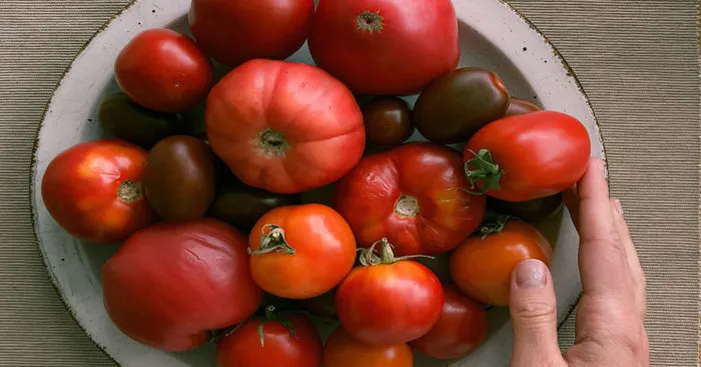
Tomatoes are usually available almost all around the year depending on the region and the type.
Specifically, from May to October you can find fresh tomatoes to use in your recipes. (17)
However, avoid buying fresh tomatoes between October and May as they will be expensive and tasteless anyway.
Therefore, the idea here is to choose the type according to its production season.
To have a booster of beneficial nutrients from tomatoes especially in winter, try eating more tomato-based dishes by including tomato sauce in your recipes.
Preserving carbs in tomatoes:
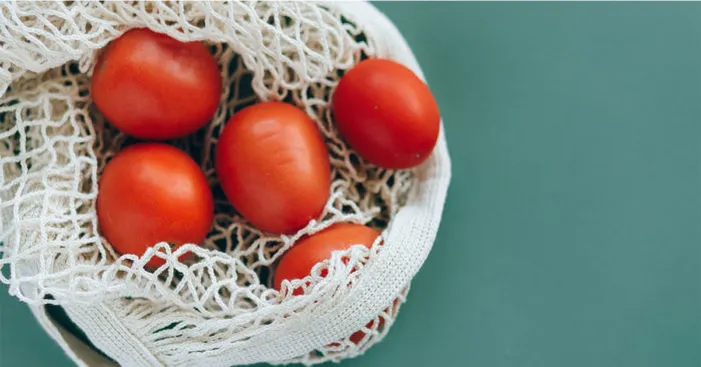
Let’s shortcut to this: tomatoes must be stored in a dark and cool place.
After harvesting, tomato vitamin content starts decreasing, for example just after 48 hours of harvesting tomatoes lose 50% of their vitamin C.
So Freshness is the key if you want to preserve most of the nutrients of your tomatoes in case you are going to freeze them.
The loss of tomato vitamins is because of air and light, vitamin A for example is sensitive to light and vitamin C is sensitive to light and air.
Thus, the best way to store your tomatoes is by buying them fresh, washing them properly, and putting them in an air-tight container and in the darkest spot in your refrigerator.
By doing that, your tomatoes will remain edible and fresh for up to 7 days.
The vitamins decay will continue in the refrigerator but it will be a much slower process.
It is very crucial to not keep overripe tomatoes next to fresh ones as they will speed up the rancidity of all the tomatoes.
In addition, storing tomatoes in a refrigerator for a long time may extend their lifespan but they won’t taste as good as fresh ones.
To avoid that, you may as well keep your tomatoes in a basket in your kitchen pantry away from light and air.
By doing that, your tomatoes will last up to 7 days and probably even longer depending on their condition when you bought them.
However, you should avoid storing tomatoes next to other fruits as the emission of ethylene will speed up their ripening.
Also, you can store green tomatoes by putting them in cartons or wrap them in a newspaper to slow their ripening process.
Ideas on how to benefit from carbs in tomatoes:

- If the type of tomato you are using is delicious when it’s raw, you can add it raw in salads or on the side of any dish.
- The little more elongated types of tomatoes, or more specifically the more acidic types are perfect for sauces for pasta, pizza, etc…
- You can use the lively colors of cherry tomatoes when you make quiches or pies by combining them with garlic or herbs to enhance the flavor.
- For ratatouilles and gratins, it is best to use cooking resistance tomatoes like Roma tomatoes which also makes it the queen of barbecues. (18)
- For appetizers, it is best to use small cherry tomatoes as they are sweet and tangy which adds a refresher and a cheerful color.
- Mediterranean cuisines include tomatoes in the majority of their dishes and even use it in juice or seasoned with salt and pepper.
- Use bright red tomatoes to make homemade jams.
- To make tomato sorbet or tomato granita as a light and fresh summer dessert. (19)
References:
(1): Reversible night blindness – A reminder of the increasing importance of vitamin A deficiency in the developed world (nih.gov)
(2): Nutrients for Prevention of Macular Degeneration and Eye-Related Diseases (nih.gov)
(3): Tomatoes provide many health benefits – MSU Extension
(4): Dietary Carotenoids and the Risk of Invasive Breast Cancer (nih.gov)
(5): Efficacy of high-fiber diets in the management of type 2 diabetes mellitus – PubMed (nih.gov)
(6): Get to Know Carbs | ADA (diabetes.org)
(7): Can tomato juice be used for prophylaxis in recurrent stone formers? (nih.gov)
(8): Lycopene and cognitive function (nih.gov)
(9): Frontiers | Lycopene and Vascular Health | Pharmacology (frontiersin.org)
(10): Homocysteine: Levels, Tests, High Homocysteine Levels (clevelandclinic.org)
(11): What is Botany?
(12): Eating Tomato During Pregnancy: Health Benefits & Risks (firstcry.com)
(13): Salmonella Tomato Outbreak Warning Expanded – 6/10/2008 (webmd.com)
(14): Harvesting Tomatoes After Spraying with Copper (tomatodirt.com)
(15): Do I Have a Tomato Allergy? (verywellhealth.com)
(16): How To Buy And Store Fresh Tomatoes | KQED
(17): Best Time To Buy Fruits & Vegetables (When Is It In Season?) ⋆ Life Dehydrated
(18): Roma Tomato: Classic Flavor, Great for Sauces (bonnieplants.com)
(19): Tomato Sorbet Recipe – Andrew Zimmern | Food & Wine (foodandwine.com)
